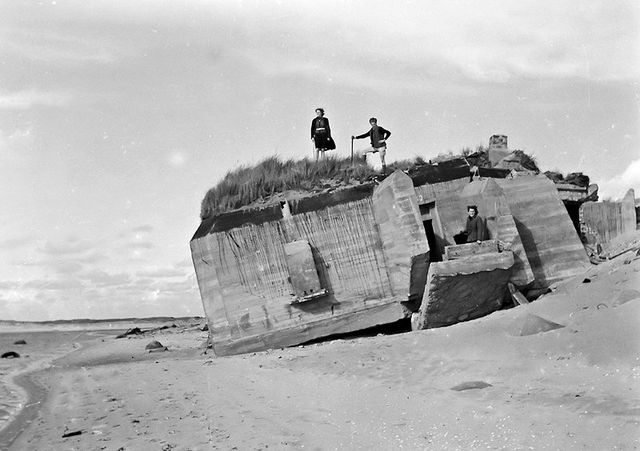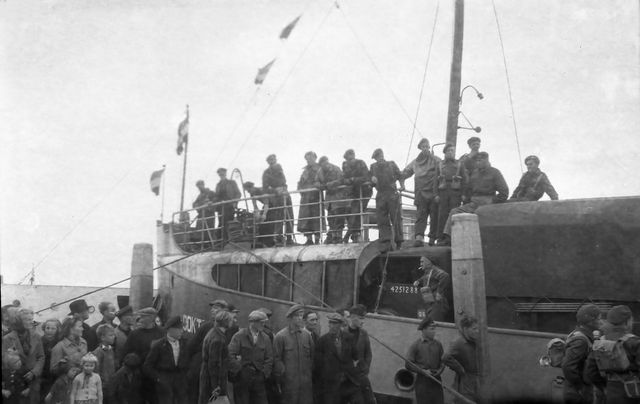The destruction in the Netherlands was enormous after the war. 15,000 homes in the coastal areas of Holland and Zeeland were completely destroyed and 300,000 residents dispelled. Large parts of the western Netherlands were flooded. To drain all this water, the Afsluitdijk locks first had to be repaired. The lock gates' lifting towers had been destroyed by the Germans. Starting up the food production in the flooded areas was a top priority.
Wadden intact
Apart from Texel, the Wadden islands survived the war intact. Although large amounts of mines and barbed wire still had to be removed, as soon as that was done, tourism could pick up again.
The Daalder company from Alkmaar dismantles North-Battery bunkers on Texel. The Kruk company from Beverwijk carried out drilling and placed explosives.
Delfzijl and vicinity
In and around Delfzijl, on Texel and certainly in Den Helder, there was much to do before the war wounds can begin to heal. Reconstruction in Den Helder began with building Austrian houses in Huisduinen and rebuilding Oud Den Helder. But the question was whether the navy would return to the city after the war. That was decided in 1948 and plans for expanding Den Helder were made. Emergency housing was built in Nieuw Den Helder, where, after 70 years and some major renovations, people are still living.
Dismantling the Atlantic Wall
Dismantling the Atlantic Wall began in this period. The bunkers are despised remains of a black period in history and wiping out that memory is the best solution. Forget the past, look towards the future. In some places, they also obstruct water management's coast protection. A lot of concrete was destroyed with sledgehammers and explosives during that time. After the storm flood in 1953, many bunkers slid from the dunes down onto the beach, where they were then removed.
The 1950s and 60s
During the 1950s and 1960s, children could still play in the remains of what was once a very serious defence line. And it was not just Dutch boys and girls who discovered the exciting buildings of the recent past. German youths also came into contact with the bunkers left behind by their parents’ generation.
Children playing on the Freiburg II radar. (Vlieland)
After 1950
After 1950, the first German tourists returned to the coast and the islands, first a little hesitantly, but soon in droves. As if the war had never happened. People in the coastal area - understandably - had a problem with this. But as the principal of Petten, the village that was completely obliterated during the war, once said: They destroyed the village and now they have to help pay to rebuild it. And they did.
Summer houses north of Nes. In the top left corner of this postcard a bunker repurposed as a summer house can be seen. (Ameland, 29 June 1948)

